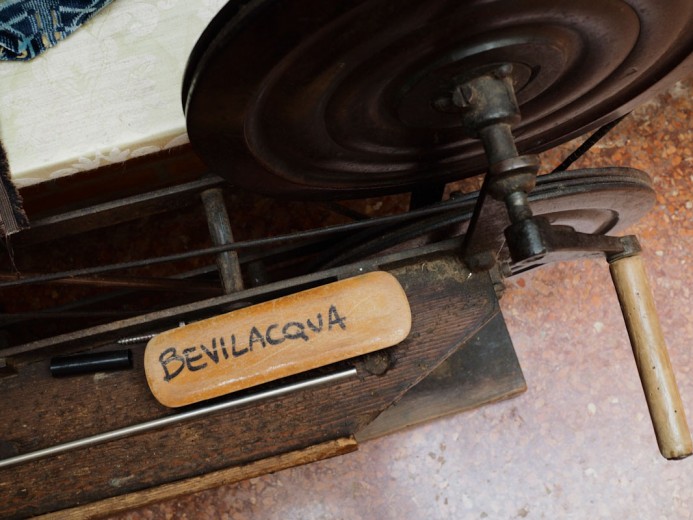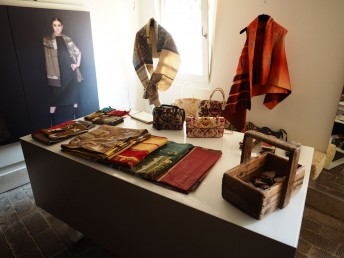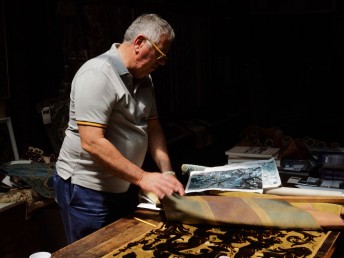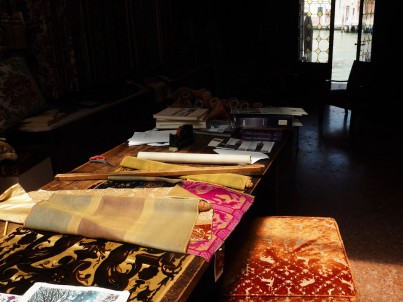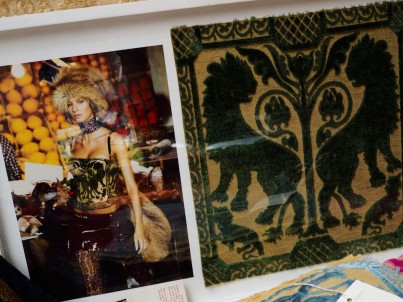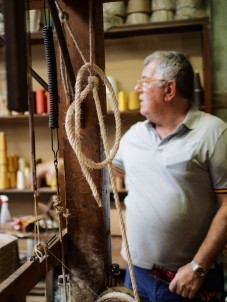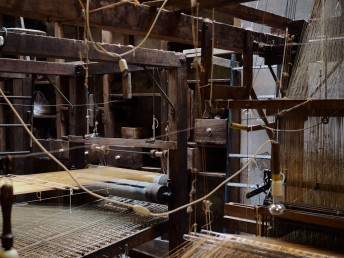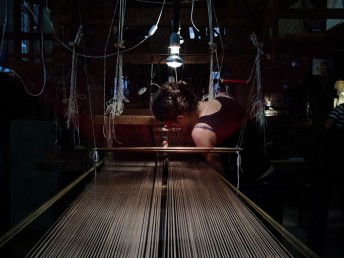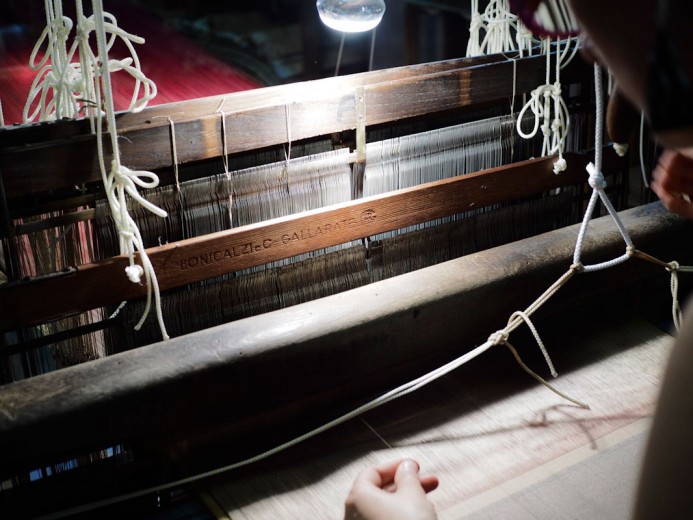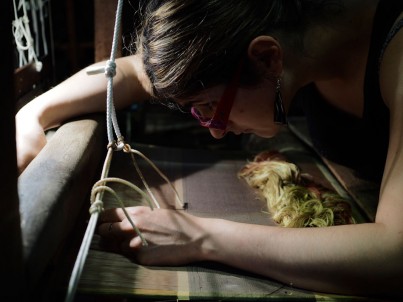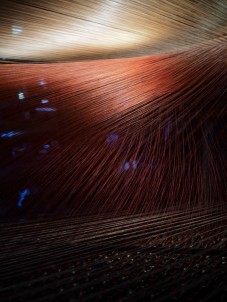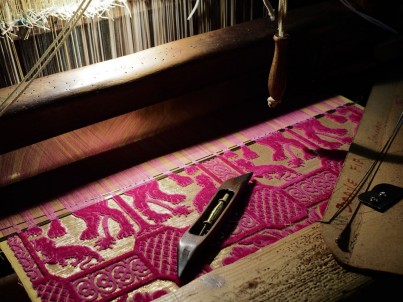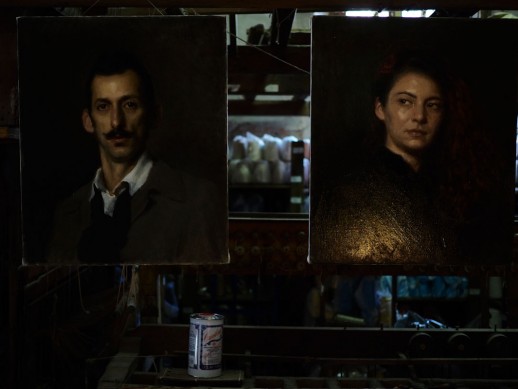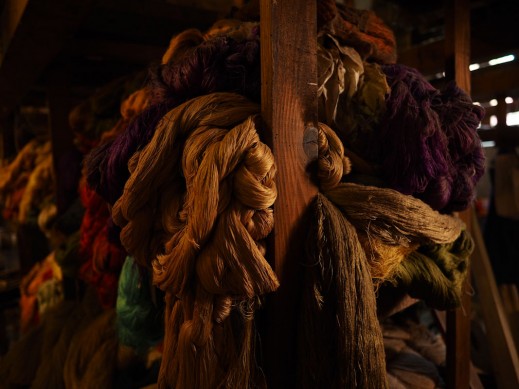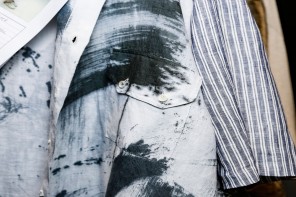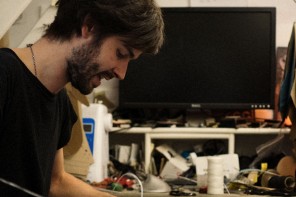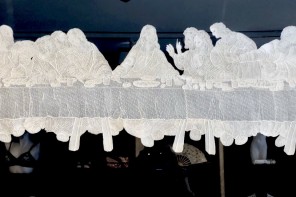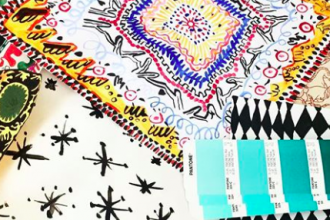Venice, Italy–A chip-chopping sound of silk being woven and trimmed, permeates through the dusty hall that is the Tessitura Luigi Bevilacqua mill, situated in Venice’s Santa Croce neighborhood. Not much has changed since Luigi Bevilacqua opened shop in 1875 — except the floor creaks a lot more now, after numerous floods have filled the floors of the wood-paved 19th century workshop that overlooks the picturesque Rio de San Zan Degola. Now Luigi’s great-grandson Alberto Bevilacqua is carrying on the torch and keeping the family-business together.
Famous for dressing popes and the plush royal furnishings of Europe, the Venetian Bevilacqua mill has survived globalization and is keeping its soprarizzo and damasks alive in the age of catwalks and insta fashion. Soprarizzo, an Italian term for “over-the-curls,” is an ornate fabric that once commonly lined the halls of palaces, carriages and even vestments.
The Bevilacqua family uses looms from the 1700s that were salvaged from one of the artisan academies after Napoleon captured and invaded Venice. While these towering wooden machines are much slower than modern day ones, they were envisaged as a sort of primordial laser printer: each silk thread corresponds to a hole in a piece of cardboard that guides the machine. The riddled cardboard charts the design of the elaborate jacquard. The Bevilacqua family also has a more industrial factory with newer machines, but the ancient production at their Santa Croce location is the only one capable of producing this “riccio” or curly effect.
Their clients range from Valentino to Dolce and Gabbana, who have come to the family for special high-ticket pieces. “I read Architectural Digest a lot, mostly because it is pretty often I will find our signature velvet,” Alberto Bevilacqua told BACO, during an exclusive tour of the mill.
Back in their heyday, the Vatican, however, was one of the factory’s most important clients. Pope Paul VI’s papacy, however, changed all of this. His mission to keep the Vatican’s finances focused on the poor, was the first of a series of economic blows that reduced the Bevilacqua family’s production.
In fact, in the 1500s there were about 6,000 looms like theirs capable of producing soprarizzo velvet. Now there are only about 12.
“Keeping the family business alive hasn’t been easy. But we take great pride in knowing we are one of the last surviving firms that continues this great tradition.”
IN THIS ISSUE: Bevilacqua Velvet: A Bastion of Venetian Tradition, Giuliana Longo: The Gondolier’s Milliner , Chiarastella Cattana: Venetian Jacquards, Simone Cevedese: The Art of Murano Glass ; The Gondolier’s Slipper: Alla Giulia ; Tabarro: The Medieval Gentleman’s Cape


